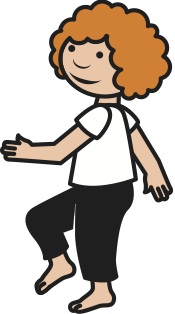Foundations ABC’S
Children (and adults) will need to develop good balance, agility, spatial awareness and coordination to underpin their physical ability, not only for games, activities and sports but also in order to complete day-to-day tasks.
It is therefore important to provide many opportunities, especially in the early years, for children to develop these foundations.
Agility
Agility is the speed with which a child performs a movement and the ability to change the direction of the body in an efficient and effective manner.
In order to achieve agility we requires a combination of:
- static balance
- dynamic balance
- speed
- strength
- coordination
- spatial awareness
Balance
Balance is an important skill required for all that we do and will impact a child’s ability to perform locomotive skills and ball skills, as well as when performing everyday tasks such as dressing and reaching. It is therefore important to include balance activities in children’s daily activities.
There are four primary components of good balance:
- Proprioception or Spatial Awareness
- Vestibular system in the ear
- Strength of the back and stomach muscles, hips and ankles
- Vision
Co-ordination
Bilateral co-ordination
Bilateral co-ordination is the ability to use both sides of the body at the same time in a controlled and organised manner. Bilateral co-ordination shows that both sides of the brain are communicating which allow our hands and feet to work together. This not only allow us to achieve gross motor actions such as running, skipping and star jumps but also allows us to do daily activities such as writing, cutting with scissors, climbing stairs and cooking.
Hand Eye Co-ordination
This is the ability to guide the hand movements with the eye such as catching or striking a ball. Hand-eye co-ordination is also important for handwriting and reading.
Spatial Awareness
Spatial awareness can be defined as the awareness of the body in space (how they fit into a space), and the child’s relationship to objects in the space (how they fit into a space in relation to another/other objects or people).
Children will need to have adequate body awareness before they will be able to develop spatial awareness. If they do not have an awareness of how the parts of their body fit together, they might find it difficult to understand how their body fits into a space. Once they have good body awareness they will then be able to form the relationship of their body with other objects/people within a space.




